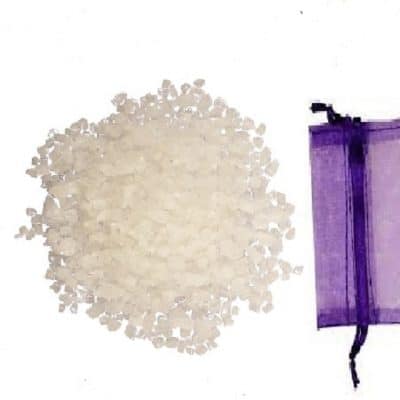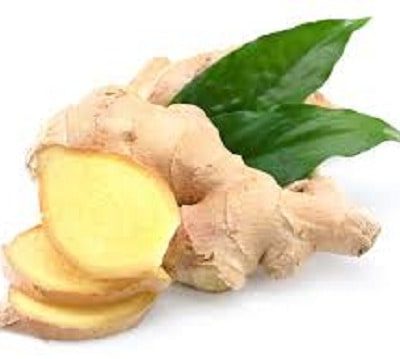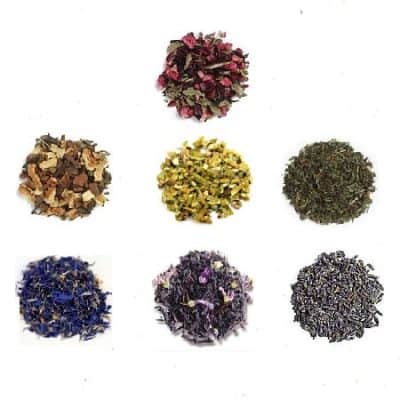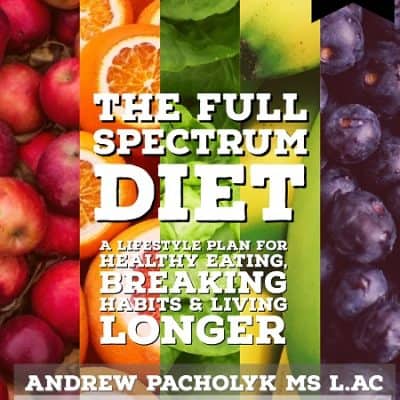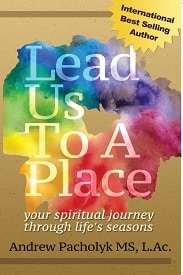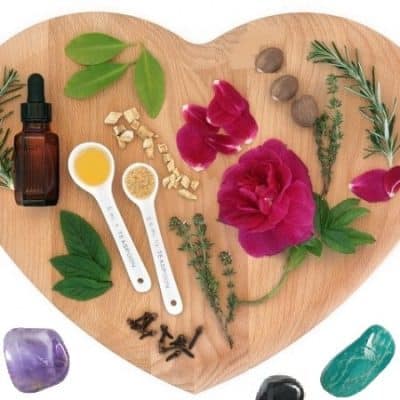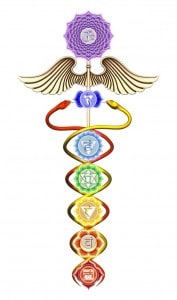 Colds and Flu
Colds and Flu
See also allergies, asthma, detoxing, environment, food as medicine, holistic therapy, pain, sinusitis, stop smoking, stress.
Colds and the flu or influenza are similar in many ways, yet the flu can sometimes lead to more serious problems, such as pneumonia. Colds and flu are the most common and communicable and spread easily between people. They are more likely to strike when a person’s immune system is low. The common cold is an acute (short-term) viral infection of the upper respiratory tract.
Symptoms of a cold include runny or congested nose, sneezing, fatigue, headache, body aches, cough and general feeling of malaise. A sore throat is sometimes a (differential) symptom of a more serious condition distinct from the common cold (such as strep throat) that may require medical diagnosis and treatment. A cough can be further differentiated by the sound of the cough and the ability to expel or not to expel the phlegm. The color of the phlegm is also looked at. (See Traditional Chinese Medicine).
The flu typically affects 20%-50% of the U.S. population each winter. It’s a highly contagious disease, spreading mostly by direct person-to-person contact and coughing is the most effective method of transmission. The flu virus can linger in the air for as long as three hours. In close quarters, conditions are ripe for the spread of the virus.
Symptoms of a flu are very similar to that of a cold, but the signs of a flu can be much more severe, especially at the onset. A fever, characteristically high (102-104 F); that lasts 3-4 days, a severe cough that gets worse, with chest discomfort or pain can be signs of pneumonia. Severe body aches and fever/chills are side effects of the body doing its job of trying to fight off an infection.
| Symptoms: | Cold |
| Fever: | Sometimes |
| Headache: | Occasionally |
| General Aches, Pains: | Sometimes |
| Fatigue, Weakness: | Sometimes |
| Extreme Exhaustion: | Never |
| Stuffy Nose: | Common |
| Sneezing: | Usually |
| Sore Throat: | Common |
| Chest Discomfort, Cough: | Mild to moderate; hacking cough |
| Complications: | Sinus congestion; middle ear infection |
| Prevention: | Wash hands often; avoid close contact with anyone with a cold |
| Treatment: | Decongestants; pain reliever/fever reducer medicine |
| Fever: | Usual; higher (100-102 F; occasionally higher); lasts 3 to 4 days |
| Headache: | Common |
| General Aches, Pains: | Usual; often severe |
| Fatigue, Weakness: | Usual; can last 2 to 3 weeks |
| Extreme Exhaustion | Usually at the beginning |
| Stuffy Nose: | Sometimes |
| Sneezing: | Sometimes |
| Sore Throat: | Sometimes |
| Chest Discomfort, Cough: | Common; can become severe |
| Complications: | Sinusitis, bronchitis, ear infection, pneumonia |
| Prevention | Wash hands often; avoid close contact with anyone who has flu symptoms |
Treatment: Decongestants, pain relievers, or fever reducers, cough medicine, antivirals
Tips for Avoiding a Cold
1. Wash your hands often. This is the number one preventative measure you can take. You can pick up cold germs easily, even when shaking someone’s hand or touching doorknobs or handrails. You should lather up your hands well for at least 20 seconds, then rinse-off the soap thoroughly for another 20 seconds. Be sure to include the areas under you nails when you wash your hands, as they are a lurking ground for germs. Drying your hands, studies have shown, is also an important step in removing germs.
2. Keep your immune system strong. Get good quality sleep, eat nutritious food and stay strong with moderate exercise.
3. Limit airborn risks by keeping your nose clear and hydrated. Usually, we infect ourselves by placing our own virus contaminated hands to our faces. Less frequently, we can catch them from airborne sources.
4. Sneeze or cough into a tissue and then throw the tissue away.
5. Clean surfaces you touch with a germ-killing disinfectant.
6. Don’t touch your nose, eyes, or mouth. Germs can enter your body easily by these paths.
7. Any season is cold and flu season but the most prevelant time tends to be in the fall and winter, when people are together in close surroundings.
8. Avoid large crowds in enclosed areas as much as possible, especially during cold and flu season.
9. Keep your feet and neck warm. Cold feet and a chilled neck cannot cause a viral infection. When the feet or neck are cold, cold contracts, that includes the mucous membranes in the nose. When mucous membranes contract, they dry out and cause the glands to stop functioning. This easily allows dust and bacteria in, as the nose stops it’s filtering function, making your entire system more vulnerable.
10. Sometimes even when we do our best to avoid these situations, they occur regardless. Just being aware is half the battle.
11. Colds can be spread through the air, such as when a person sneezes, or by contact with contaminated objects.
12. Those most at risk are children in 5 to 14 year range, who spend much of their time in school, in close contact with their classmates. More serious complications occur in elderly adults and those with compromised immune systems.
13. The remedies for a cold or flu are sleeping, resting, plenty of clear fluids, and avoiding sugar, which will assist your immune system to recuperate. There is no proven cure for colds or flu, but time.
14. Stop touching your face. The transfer of bacteria or viral pathogens are transmittable through the mucous membranes of the eyes, nose and ears. If you have to touch your face, make sure your hands are clean. If you are unsure, use a tissue to touch your face.
15. Sanitize your office. Consider cleaning everything that gets touched by other people such as microwaves, fax machines, keys, doorknobs, elevator buttons, the armrests on my chair. DO this with a good disinfectant at least once a week, even if it looks clean. It’s just basic hygiene. Rhinoviruses can live on surfaces for up to 48 hours!
16. Gym Etiquette can save you from getting sick. Instead of sitting directly on a mat or bench, place a clean towel on it first. Gym equipment can be cleaned first with antibacterial wipes. Free weights, weight machines, mats, bicycle handlebars, balls, rollers all have the potential to make you ill. Just as important – make sure your hands are clean before you add to the problem.
Antibiotics and Over the Counter Drugs
Antibiotics do not kill viruses and they should not be used for colds or flu. They can treat bacterial complications such as sinus or ear infections. The overuse of antibiotics has become a very serious problem, which leads to a resistance in disease-causing bacteria that may decrease the effectiveness of antibiotics when you really need them.
Children and teenagers with symptoms of flu or chickenpox should not take aspirin or products containing aspirin or other salicylates. Use of these products in young flu and chickenpox sufferers has been associated with Reye syndrome, a rare condition that can be fatal. Because cold symptoms can be similar to those of the flu, it’s best not to give aspirin to people under 20 with these types of symptoms.
Over the counter (OTC) medications are often used for symptom relief. Here is an explanation of what’s on the shelf:
Analgesics relieve aches and pains and reduce fever. Examples: acetaminophen, aspirin, ibuprofen, ketoprofen, naproxen. Warning: Children and teenagers shouldn’t be given aspirin.
Antitussives tell your brain to stop coughing. Don’t take an antitussive if you’re coughing up mucus. Example: dextromethorphan.
Expectorants help thin mucus so it can be coughed up more easily. Example: guaifenesin.
Oral decongestant shrinks the nasal passages and reduce congestion. Examples: ephedrine, pseudoephedrine.
Managing Your Cold/Flu
1. Stay home and rest, especially if you have a fever.
2. Stop smoking and avoid secondhand smoke, which can make cold symptoms worse.
3. Drink plenty of fluids like water, coconut water and clear soups. Fluids help loosen mucus. Fluids are also important if you have a fever because fever can dry up your body’s fluids, which can lead to dehydration.
4. Don’t drink alcohol.
5. Gargle with warm salt water a few times a day to relieve a sore throat. Yin Chao, throat sprays or lozenges may also help relieve the pain.
6. Use saline (salt water) nose drops to help loosen mucus and moisten the tender skin in your nose.
7. Consider supplements such as Vitamin C, 2,000 to 4,000 mg in divided doses (based on bowel tolerance). Vitamin E compliments C, 400 IU. Echinaecea, Goldenseal, Garlic and Licorice root all help in fighting viruses and strengthening immunity.
8. Chicken soup has been shown to have healing properties. Enjoy this great old remedy.
9. Keep washing your hands, cover your mouth and nose when you sneeze and cough in order not to spread the virus to others in your household.
10. Pay attention to good hygiene and skin care. Eat a proper diet (avoid sugar).
“Andrew’s Best Remedies”
-
Sale!
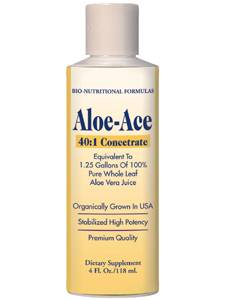
Aloe Vera Liquid
Original price was: $ 34.95.$ 31.95Current price is: $ 31.95. -
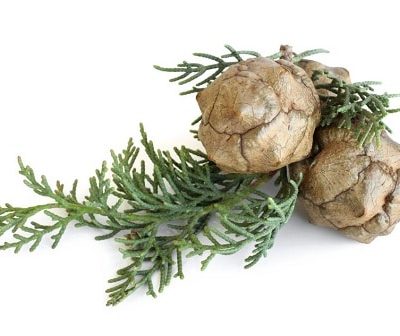
Angel’s Mist Cypress Essential Oil
$ 12.00 -
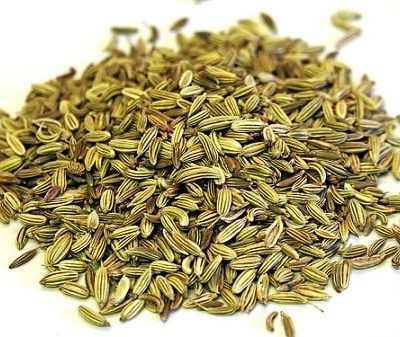
Angel’s Mist Fennel Essential Oil
$ 12.00 -
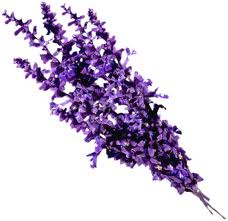
Angel’s Mist Lavender Essential Oil
$ 9.00 -
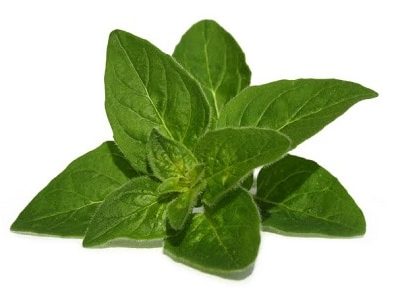
Angel’s Mist Oregano Essential Oil
$ 23.00 -
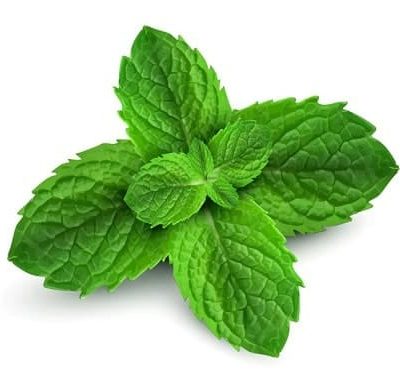
Angel’s Mist Peppermint Essential Oil
$ 9.00 -
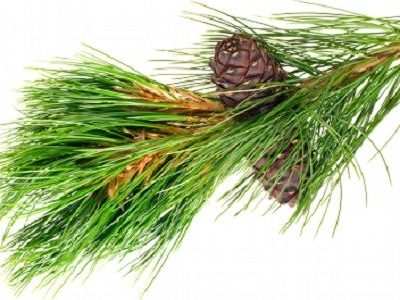
Angel’s Mist Pine Essential Oil
$ 12.00 -
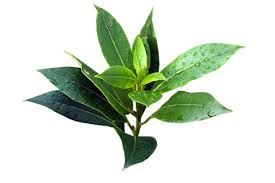
Angel’s Mist Tea Tree Essential Oil
$ 14.00 -
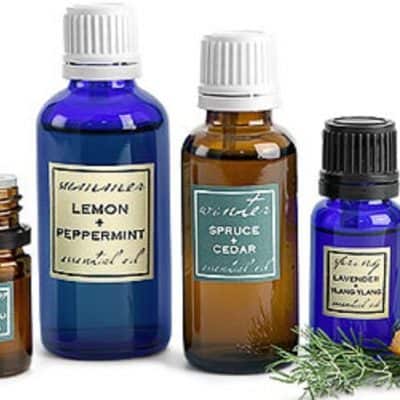
Angel’s Mist Aroma Remedy Blends
$ 19.95 -

Apple Cider Vinegar 12 oz
$ 8.95 -
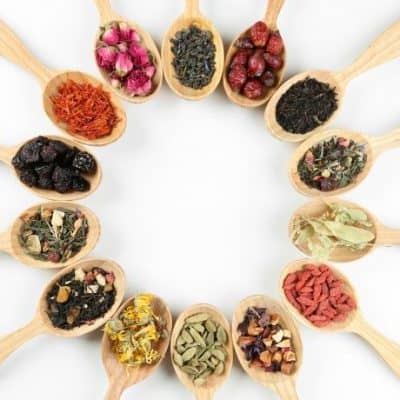
AromaThera-Teas by the Pound
$ 29.95 -
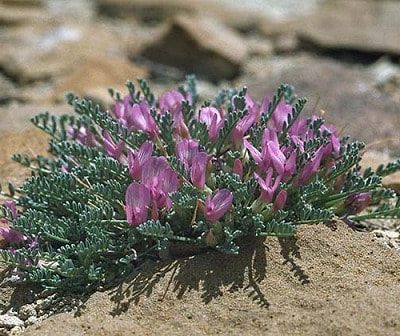
Astragalus Tincture
$ 19.00 -
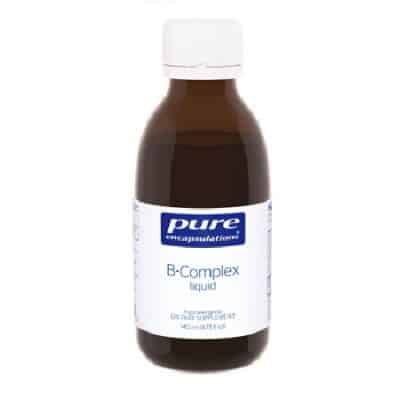
B-Complex Liquid
$ 29.95 -

Breath of Life Tea
$ 8.95 -
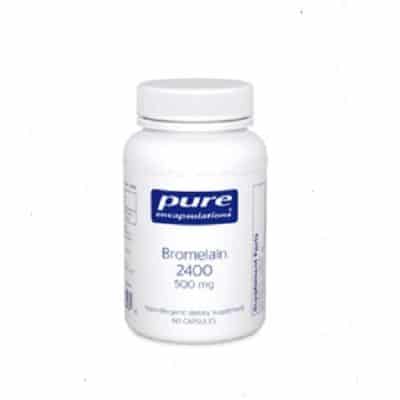
Bromelain
$ 29.95 -

Chinese Massage Oil
$ 21.95 -

Circulatory Health
$ 21.95 -
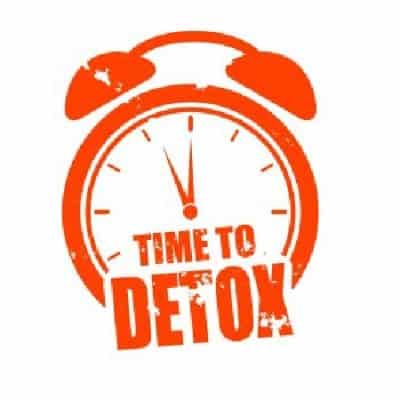
Cleanse & Detox Tincture
$ 21.95 -

Cold Calm Homeopathic Remedy
$ 26.95 -

Cough & Cold Tea
$ 8.95 -
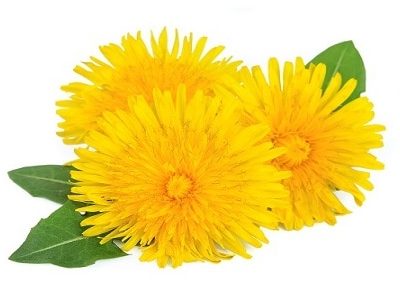
Dandelion Tincture
$ 19.00 -

Echinacea Tincture
$ 19.00 -
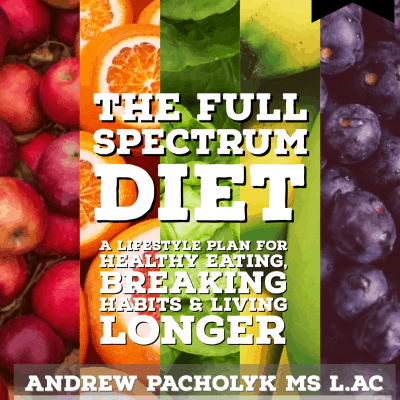
Full Spectrum Diet and Kit
$ 39.95 -

G.I Detox 60 caps
$ 31.95 -
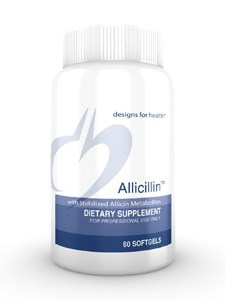
Garlic Allicillin™ 60 gels
$ 29.95 -
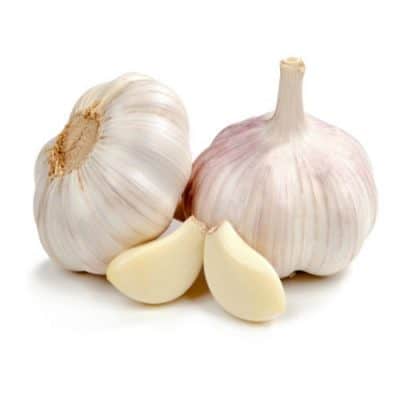
Garlic Tincture
$ 19.00 -
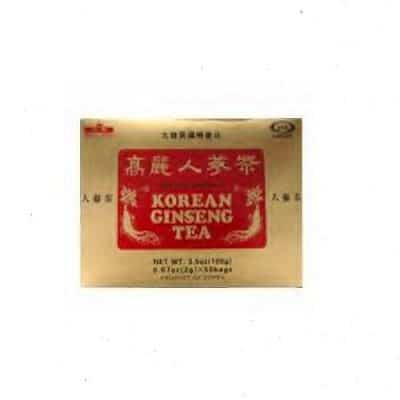
Ginger Tea Granules
$ 8.95 -
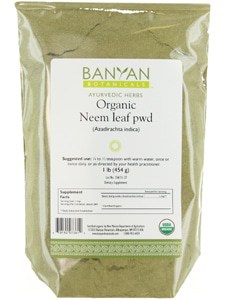
Neem Powder 1/2 lb (Certified Organic)
$ 19.95 -
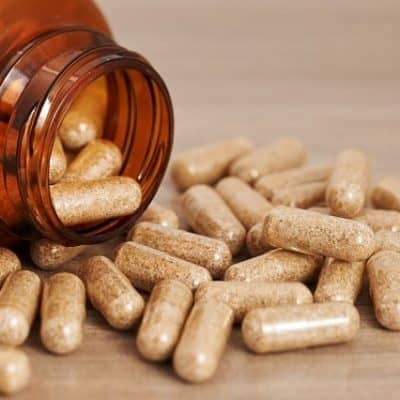
Reishi Mushroom Capsules
$ 42.00 -
Sale!
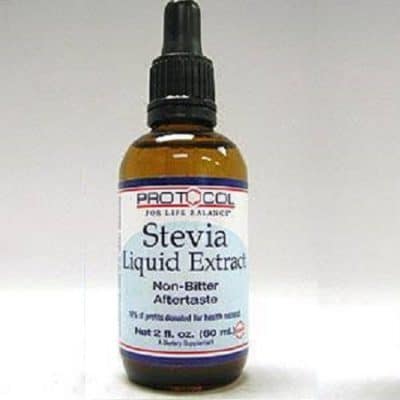
Stevia Liquid Extract
Original price was: $ 14.00.$ 11.95Current price is: $ 11.95. -
Sale!

Stop Smoking Kit
Original price was: $ 49.95.$ 44.95Current price is: $ 44.95. -
Sale!
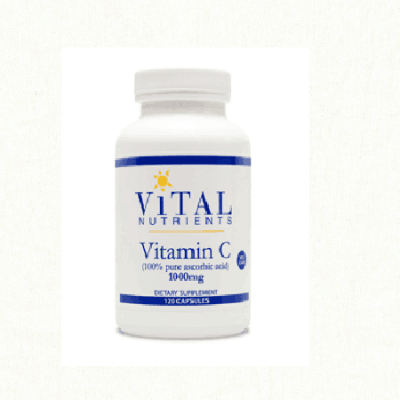
Vitamin C 1000 mg
Original price was: $ 21.95.$ 16.95Current price is: $ 16.95. -
Sale!
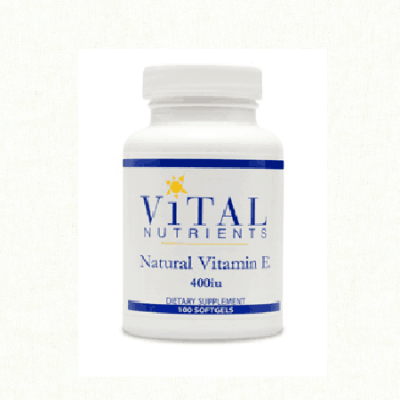
Vitamin E
Original price was: $ 21.95.$ 19.95Current price is: $ 19.95. -
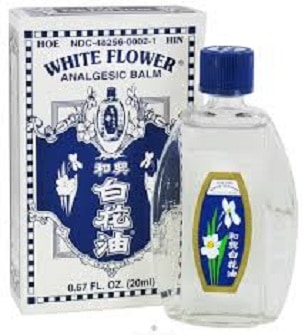
White Flower Oil
$ 14.95 -
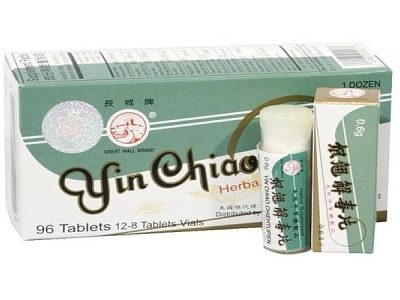
Yin Chiao Cold/Flu Pills
$ 21.95
Herbal Remedies
Adaptogens: which include Eleuthero (Siberian ginseng), Asian ginseng, Astragalus, and Schizandra, are thought to help keep various body systems-including the immune system-functioning optimally. Take Siberian ginseng in tincture, herbal granules or in capsules. Capsule doses of 500 mg three times a day. Another immune stimulant, Boneset, helps fight off minor viral infections, such as the common cold.
Echinacea: Patients primarily use echinacea to prevent and treat the common cold. The alkylamide, alkaloid, and polyacetylene fractions are thought responsible for stimulating leukocytes and increasing the release of TNF and interleukin 1. A double-blind, randomized studies for the treatment of the common cold suggest that, if initiated within 24 hours of onset, echinacea may shorten the duration of colds, but may not reduce the severity of symptoms. More research is needed. Fresh pressed juice of the flowers of Echinacea (E. purpurea) preserved with alcohol and tinctures of root of echinacea (E. pallida) have been shown to reduce symptoms of the common cold. Echinacea (E. angustifolia) root tinctures has been shown to reduce symptoms of the common cold. The minimum effective amount of Echinacea tincture or juice that is necessary to take is 3 ml three times per day. More (3-5 ml every two hours) is generally better and is safe, even for children. Encapsulated herbs may also be effective, generally 300-600 mg capsules three times per day are used. Recent studies indicate that regular use of Echinacea to prevent colds does not work. Therefore, it is currently recommended to limit use of echinacea to the onset of a cold and to use it for only 7 to 10 days consecutively.
Elderberry: is derived from the dark purple berry or from the white to light-yellow flowers of the black or common elder tree. Elderberry, a relative of the blueberry, has been found to have powerful anti-viral properties. Elderberry extract may be used to treat a cold or flu, or taken as a prophylactic which fortifies the immune system.
Horseradish has antibiotic properties, which may account for its easing of throat and upper respiratory tract infections.
Goldenseal: In traditional herbal medicine, Goldenseal root is often taken with Echinacea. The pharmacological action of goldenseal is attributed to both hydrastine and berberine. Berberine has been shown to have anti-microbial activity against certain pathogens such enterotoxigenic E. coli and V. cholera. However, due to small amounts in the root, it is unlikely that these effects would occur. Goldenseal soothes irritated mucous membranes in the throat, making it useful for those experiencing a sore throat with their cold. Goldenseal root extract, capsules, or tablets are typically taken in amounts of 4-6 grams three times per day. Using Goldenseal powder as a tea or tincture may soothe a sore throat. Caution: Goldenseal root should only be used for short periods of time, up to 7 consecutive days.
Garlic: The intact cells of garlic contain an odorless, sulfur-containing amino acid derivative known as alliin. When the cells are crushed, alliin comes into contact with the enzyme alliinase located in neighboring cells and is converted to allicin. Allicin is a potent antibiotic, but it is highly odoriferous and unstable. The ajoenes are apparently responsible for the antithrombotic properties of garlic. Allicin is described as possessing antiplatelet, antibiotic, and antihyperlipidemic activity.
Ginger: An anti-inflammatory. Ginger has been used in Ayurvedic and Chinese medicine as an anti-inflammatory. Taking 6-50 grams of fresh or powdered ginger per day indicated that ginger might be helpful. Suggested Dosage: 0.5 to 1 mg of powdered ginger daily
Licorice Root is anti viral, anti-inflammatory, soothes gastric mucous membranes. The root cleanses the colon, increases fluidity of mucous in the lungs and bronchial tubes. Licorice is used extensively in Traditional Chinese Medicine for a variety of conditions and ailments. Almost all clinical studies on licorice have been performed in combination with other herbs. Alone, licorice is used primarily to manage gastric complaints. A number of active chemicals are thought to account for its biologic activity. Due to the adverse reaction profile of licorice, many studies have been performed using the deglycyrrhizinated licorice (DGL) extract, which is free of glycyrrhizin and has had no significant reported adverse effects.
Mucilage herbs, such as Slippery Elm and Marshmallow, are often helpful for symptomatic relief of coughs and irritated throats. Mullein has expectorant and demulcent properties, which accounts for this herb’s historical use as a remedy for the respiratory tract, particularly in cases of irritating coughs with bronchial congestion.
Red Raspberry, Blackberry and Blueberry leaves contain astringent tannins that are helpful for soothing sore throats.
Sage tea can be gargled to soothe a sore throat.
Yarrow has been used for sore throats. All of these remedies are not supported by modern research at this time, but are traditionally used.
Wild Indigo also stimulates the immune system, which might account for its role against the common cold and flu.
Herbal Teas
In a stainless steel pot, boil desired amount of water. The moment it boils turn the heat off. Add the following herbs in an infuser, muslin bag or tea ball for a single cup or add one-three teaspoons of herbs per cup for larger amounts.
Allow the herbs to infuse for up to 5 minutes. Drink 3-4 cups a day. For flavor-add lemon and sweeten with Stevia or organic honey. These herbs are helpful for gently cleanses, purifying, detoxing, anti-inflammatory. This powerful formula will help remove accumulated toxins in the body. Strong antioxidant, cleanses the colon and stimulates circulation.
Cough & Cold Tea – Blended to feed and nourish the body during cold & flu season. This healing tea cleanses with antibacterial, anti-inflammatory properties. Echinacea Purpurea, Mullen, Goldenseal Leaf, Hyssop, Elderberry, Olive Leaf.
Immune Builder Tea – When taken on a regular basis, this tea helps to build and strengthen the immune system. Cat’s Claw, Olive Leaf, Hawthorne, Peppermint, Spearmint.

Herbal Combinations and Formulas
Herbal tinctures are concentrated liquid extracts of the medicinal properties of herbs. Shake the tincture bottle well. As a dietary supplement, place 1 to 3 droppers full ~ approximately 1 tablespoon or 40 drops, under the tongue, or in juice or water as needed, 2-3 times a day.
Cold and Flu: Echinacea, Goldenseal, Cayenne.
Cough Calm: Horehound, Elecampane, Comphrey root, Wild Cherry Bark, Eucalyptus, Chickweed, Slippery Elm, Licorice.
Echinacea & Goldenseal: Echinacea & Goldenseal.
Echinacea & Oregon Grape root: Echinacea & Oregon Grape root.
Immunity: Astragalus, Pau D’Arco, Suma, Dandelion root, Oatstraw, Kelp.
Infection: Echinacea, Yarrow, Myrrh, Goldenseal, Black Walnut, Marshmallow, Plantain & Cayenne.
Aromatherapy Remedies
Essential oils can assist in boosting immunity, fighting infection and eliminating toxins. Helpful, are Essential oils such as lemon, ginger, pine, eucalyptus, bergamot, ginger, myrrh, orange, tea tree.
Camphor is a white transparent waxy crystalline solid with a strong penetrating pungent aromatic odor. As an antimicrobial substance, camphor is readily absorbed through the skin and produces a feeling of cooling similar to that of menthol and acts as slight local anesthetic. In larger quantities, it is poisonous when ingested and can cause seizures, confusion, irritability, and neuromuscular hyperactivity. Found in our Muscular/Pain Remedy Blend.
Eucalyptus this pungent woody and spicy oil helps to stimulate circulation. Eucalyptus oil is often used in a steam inhalation to help clear nasal and sinus congestion. It is said to function in a fashion similar to that of menthol by acting on receptors in the nasal mucosa, leading to a reduction in the symptoms of, for example, nasal congestion.
Ginger This incredible warming oil has a spicy scent and is very therapeutic.
Lavender This oil is an amazing therapeutic oil. Stimulates new cell growth, lifts depression, calms nerves, fights infection, reduces inflammation, and eases congestion. Relieves pain and muscle spasm. Lowers blood pressure.
Menthol is actually a compound obtained from peppermint oil or other mint oils or made synthetically. Menthol has local anesthetic and counter-irritant qualities. It is contained in nonprescription products for short-term relief of minor sore throat and minor mouth or throat irritation. Menthol is also contained in combination products used for relief of muscle aches, sprains, and similar conditions. Menthol is often used with other ingredients such as camphor and eucalyptus for pain relief. Menthol is considered an antidote for many homeopathic remedies and should be avoided by people taking them. Found in our Muscular/Pain Remedy Blend.
Myrrh resin has been shown to kill various microbes and to stimulate macrophages (a type of white blood cell). Usnea has a traditional reputation as an antiseptic and was sometimes used for people with common colds.
Peppermint relieves pain, muscle spasms, reduces inflammation, fights infection, clears congestion, helps in digestion, and promotes good nerve health.

Cold & Flu Rub
Blend these wonderful oils together to create a special rub for improving over warmth, circulation and easier breathing. Create this special rub blend to massage over the chest, throat and sinus areas to help with loosening mucus, soothe the throat and clear the head.
7 drops Eucalyptus essential oil
5 drops Peppermint essential oil
3 drops Lavender essential oil
Directions:
Mix these together with a tablespoon of petroleum jelly or thick body lotion. Massage over chest, throat and sinuses.
OR
Add 9 drops Ginger essential oil to the above oils and add to 4 ounces of carrier oil such as jojoba, sunflower or safflower oil. Add 30 drops of this oil blend into a bath of hot running water. Relax in the water for 15-20 minutes. Be sure and cover your chest and throat with the water. When done, drain and clean the tub, cover yourself with something warm.
Not a DIY (do it yourself-er) try Andrew’s Aroma Remedy Blends:
~ 3 times a day, morning, noon and night, utilize these blends of essential oils:
Angel’s Mist Cold/Flu Rub Remedy Blend
Nutritional Advise
Water is essential in any healing process. Distilled water is the best. 6-8 eight ounces glasses per day.
In addition to eight glasses of water, clear juice, tea, and other mostly clear liquids are advised. This will replace important fluids lost during a cold and help flush out impurities that may be preying on your system.
Sip chicken soup. A long-time folk remedy is now a proven fact. A cup of hot chicken soup can help unclog your nasal passages. Researchers at Mount Sinai Medical Center in Miami Beach found that hot chicken soup, either because of its aroma or its taste, “appears to possess an additional substance for increasing the flow of nasal mucus.” These secretions, what comes out when you blow your nose or sneeze, serve a first line of defense in removing germs from your system, the researchers say.
Zinc lozenges can cut colds short, to an average of four days. Zinc can also dramatically reduce symptoms such as a dry, irritated throat.
At first onset, do a dropperful of Goldenseal and/or Echinacea directly in the mouth three to four times a day. **Do not take Goldenseal for more than seven days.***
The very fact that you have a cold in the first place may point to your eating “too congesting a diet” that puts a strain on your body’s metabolism. Counteract it by eating fewer fatty foods, meat and milk products, and more fresh fruit and vegetables.
What You Should Avoid:
Limit foods that have little or no fiber such as ice cream, cheese, meat, snacks like chips and pizza, and processed foods such as instant mashed potatoes or already-prepared frozen dinners. Too much white flour and refined sugar.
What you don’t eat may be even more important than what you do eat. Avoid alcohol, caffeine and sugar, because they tend to worsen the situation.
Reduce Processed and Refined Foods:
Avoid fried foods, white pasta, white rice, full fat dairy, white potatoes, white bread (baguettes, bagels, pita).
Processed food can rob your food of nutrients and vitamins that your body needs to fight off stress and promote good health. Try to buy whole foods, unprocessed foods and try and stay away from “instant” foods, preservatives, artificial flavors, saturated fats, refined foods, hydrogenated food and MSG.
Reduce Sugar Intake:
Too much sugar can rob our body of essential nutrients. Simple carbohydrates from baked goods, pastries, most crackers and cookies must be limited to a very small portion or completely removed from the diet.
Avoid Mucous Producing Foods
Dairy and wheat are the biggest mucous producing foods to avoid. Casein in dairy products (milk, yogurt, cheese…), and gluten in wheat require strong stomach acids for digestion. Along with milk products, caffeine, sugar, salt, non-herbal teas, (especially black tea), all create excess mucus. Soy is one of the most mucus producing plant foods. Those who give up meats and dairy and switch to soy products, have a greater risk of creating an unhealthy mucus build up in the body. Bananas and potatoes are also big mucous producers.
Homeopathy
This medical system uses infinitesimal doses of natural substances to stimulate a person’s immune system and body’s natural defenses. Homeopathic remedies are named for the plant or animal ingredients they are made from. Homeopathy not only offers relief from temporary disorders but, can provide long term healing of a person due to its individual and “holistic” approach. This type of healing makes it easier and possible to avoid recurrence or relapses in the future and homeopathy stimulates the body’s natural defense system by reestablishing normal immune system and cell functioning.
As an Adjunct Therapy:
Aconite if symptoms are just beginning. When symptoms come on suddenly and violently.
Kali Bichromicum if in the later stages of a cold. When mucus discharge becomes thick and difficult to clear from head, nose, throat. hoarse cough.
Rhus Toxicodendron if cold comes on due to season changes. Stiffness, body aches, restlessness, anxiety.

The Full Spectrum Diet
As a Nationally Certified Herbalist and Licensed practitioner of Acupuncture and Chinese Medicine, Andrew Pacholyk, MS, L.Ac. has spent years developing a natural healthcare plan, which incorporates the benefits of fresh, full spectrum foods based on their color and their properties. A balance of attractive colors in the foods you eat, play an instinctual part as to what the body needs in the moment. The color energy of fruits, vegetables, vitamins and minerals all come into play when furnishing your body with the proper nourishment.
This easy to use system monitors healthy weight by the colors of food on your plate!
The Full Spectrum Diet is based on the proponents of color therapy and the holistic principles of eating mindfully, eating to nourish the body and seeing food in a more natural and spiritual way. Meals rich with different colored fruits, vegetables, meat, chicken, fish and whole grains means you are getting a healthy variety of nutrients that your body needs.
It is a simple way to eat healthy in order to achieve healthy results! Want to know more?
Traditional Chinese Medicine
Traditional Chinese Medicine (TCM) is the oldest, continually practiced, and professionally administered health care system in the world. It is a documented medical system spanning over 2,500 years based on comprehensive philosophies, rational theories, clinically tested and empirically verified by over 100 generations of highly educated practitioners.
Chinese Medicine is a total system of internal medicine, which is comprised of a diagnostic procedure based on signs, symptoms and treatment styles including acupuncture, herbal medicine, exercise, diet and meditation. It’s foundation is based on the principles of balance; the interdependent relationship of Yin and Yang. Through this balance, health is achieved and maintained.
In Chinese Medicine, a cold or the flu may be differentiated into Wind Cold or Wind Heat patterns.
Acupuncture and herbal medicine can be an effective complement to your treatment. Acupuncture redirects your Qi or vital energy into a more balanced flow. It provides support to the underlying energetic spheres affected by poor digestion and lack of movement. Acupuncture releases tension in the muscles. This allows increased flow of blood, lymph, and nerve impulses to affected areas, decreasing the stress experienced by you.
Diaphoretic (sweating) therapy is often recommended for this condition, since it warms the body and forces the pathogen out through the pores. The specific course of herbal treatment depends on the pattern and severity of your symptoms. Chinese astragalus root, recently spotlighted in clinical trials, stimulates every phase of immune function. It increases the number of stem cells (the parent cells of all bodily tissues) and helps them develop into active immune cells, significantly enhancing macrophage activity, and consequently reducing the number and duration of colds. At the beginning of a cold, consider miso soup with spring onion and fresh ginger.
Yin Chiao Chieh Tu Pien or “Yin Chiao” is my favorite pick for cold and flu symptoms! A great natural alternative for temporary cold and flu symptoms such as minor aches and pains, headache, runny nose and sneezing. This ancient Chinese classic formula helps with acute sore throat from cold or flu. Helps with frontal headaches from a common cold and helps cough with yellow sputum. A wonderful remedy to always have in your herbal medicine cabinet.
Use for the first day or two of a wind-heat attack (cold, esp with a sore throat), exhibiting toxic heat symptoms (flu). The main discomforts are swollen lymph nodes, sore throat, aching body, fever with chills, headache, sore shoulders, stiff neck. Promotes sweating. Excellent when taken immediately. Also useful for skin itching due to wind-heat, and allergenic skin reactions (hives).
Visit Your TCM practitioner for a proper diagnosis and treatment.
DIY Acupressure Points for Helping with a Cold
There is no substitute for a professional acupuncturist who has studied medicine for 5 years in order to get a license.
Here are some great points that you can press deep and massage to help bring some relief from symptoms!
Stomach 36 - Leg Three Li
ST 36 Leg Three Li is located on the leg, 3 cun (inches) below ST 35, one finger width lateral from the anterior border of the tibia.
This point is indicated for:
- Tonify deficient Qi a/or Blood.
- Tonify Wei Qi and Qi overall – low immunity, chronic illness, poor digestion, general weakness, particularly with moxibustion, very important acupuncture point for building and maintaining overall health.
- All issues involving the Stomach a/or the Spleen – abdominal/epigastric pain, borborygmus, bloating, nausea, vomiting, GERD, hiccups, diarrhea, constipation…
- Clear disorders along the course of the channel – breast problems, lower leg pain.
- Earth as the mother of Metal – will support Lung function in cases of asthma, wheezing, dyspnea.
- Psychological/Emotional disorders – PMS, depression, nervousness, insomnia.
Large Intestine 10 - Arm Three Li
This point is commonly used for neck tightness, shoulder pain, diarrhea, and tennis elbow.
Shou San Li (LI10) or Arm Three Li – is located on the outer surface of the forearm and three fingers breadth below the elbow crease when the elbow is bent 90 degrees.
Stimulate this point by pressing on it for 30 seconds with your thumb. Now, release the pressure gradually. Repeat on the other hand.
Liver 3 -Bigger Rush
The source point of the Liver meridian, Lv 3 helps stimulate the Liver energy. It keeps all the Qi in the body flowing smoothly. When the Liver energy goes out of balance, it can cause stagnation and imbalance everywhere else. Of all the many points on the body, this is the most effective for regulating the smooth flow of Qi It is the most important point for combating stress.
Lv 3 is located on the top of your foot, between the big toe and second toe.
Start at the web margin of skin between the two toes. Now slide your index finger up between the bones until you feel a depression about 1/2 inch up.
Using your index finger, press between the bones. Start with light pressure. Increase the pressure gradually as much as you can tolerate or until you are using moderate to firm pressure. Press for about 1 minute.
Large Intestine 4 - Adjoining Valley
The partner to Lv 3, LI 4 helps to balance the flow of energy between the upper and lower parts of the body. Caution: Pregnant women should not press on this point.
To find this point, holding your left hand palm down, and fingers pointing out straight, squeeze your thumb against the other fingers. LI 4 is located in the middle of the fleshy mound that pops up between the thumb and index finger.
With your left hand facing down, use your right hand (thumb on top, index finger underneath) to take hold of the webbing between your left thumb and index finger. Squeeze in the center of the webbing, pressing toward the bone of the index finger. Hold one minute, and repeat with the other hand.

Massage and a Cold
There are many different approaches to massage and applications of it. “Massage Therapy” is a holistic procedure that affects all systems of the body; digestive, elimination, respiratory, circulatory, lymphatic, endocrine and nervous systems. Many of today’s health problems arise from stress. Because stress upsets the delicate integral balance of all your body’s functions, regaining this balance requires a holistic approach.
Massage Therapy and Lymphatic Drainage Massage not only treats those parts of you which are a problem, but also affects the whole of your metabolism through normalizing your circulatory, muscular and nervous systems and their interdependent functioning.
Massage is effective for the whole system. This can be done with soothing massage oils or invigorating bath salts to help relax the muscles and/or stimulate the immune response.
Learn How to Give a Massage. This step by step method will help you learn just how to make your subject feel great!
Hot Stone Massage Therapy. is recommended for this condition. It is an ancient Ayurvedic therapy with river bed stones which draw out stress, tension and impurities from the body.

Guided Imagery
Guided Imagery is a technique that won’t necessarily treat your cold or flu directly, but it is a powerful tool for helping to guide the body into relaxation and a more positive way of thinking. Whenever we are positive, we are more apt to feel better about ourselves and our recovery. This mind “switch” is essential for any type of healing process. So visualizing a health, better you, is a very cathartic procedure.
Do Visualization: See yourself in a comfortable and balanced state, by changing your mental behavior.
Reward Yourself Differently: Reprogram your brain to find comfort in people and positive social actions.
Use Imagery To Obtain Self Awareness: Become in tune with your feeling. Discover who YOU are and what satisfies you or dissatisfies you.
The power of visualization and guided imagery is one of our most powerful gifts! A healing tool we all have with in us – the “power of the mind!” Learning how to do Guided Imagery has many benefits. Guided Imagery helps us to develop our imagination as a healing tool. The premise is to use “Mind Medicine” to connect the mind and body in order to free ourselves from pain due to ANY Medical Condition. This concept allows us to deepen our abilities to fully relax, quiet the mental chatter, create restful sleep and invite a positive and productive thought process. Learn more about how guided imagery can work for you!
Ayurveda
The principle medical system of India is known as Ayurveda and is over 5,000 years old. This “Science of Life” is considered the art of living in harmony with nature. Developed from the ancient text of The Vedas, Ayurveda views the human body as a “homunculus” of our cosmic Universe, regulated by the balance between three primordial humours, call Dosha.
Your dosha are your Ayurveda mind and body type. There are three doshas in Ayurveda: Vata, Pitta, and Kapha. We each have all three of the doshas in our physiology, just in different proportions, so your dosha is unique and personal; it is like your fingerprint.
From the Ayurvedic perspective, the heart is the seat of prana (life energy), which is maintained by a delicate balance of agni (the solar energy element) and soma (the lunar energy element). Excess mental and emotional stress wastes away soma in the heart. The heart, is also the seat of ojas, the substance within us that maintains life and promotes bliss and longevity.
The Common cold is the most common dosha disorder affecting us. Everyone has suffered from the common cold at some point. In Ayurveda, this ailment is called as “Pratishyaya”.
Home Remedies
Mix some turmeric and black pepper together. Boil this in water. Sip this quickly when hot as you do with tea.
Squeeze the juice of two lemons in a glassful of water. Take at bedtime to help with relief from the nasal problems.
Take a pinch of salt. Put a few drops of mustard oil in it and blend it till the oil loses its fluidity. Dab this mixture on the nostrils, neck and chest. It will tingle a bit, but the relief will be fast.
Mixing black pepper, cinnamon, and cardamom and using it as a snuff. Helps in opening severely congested nasal passages.
Before going to bed, apply eucalyptus oil on the forehead, chest and the nostrils in the night. Then wrap yourself in a warm blanket and go to sleep. You will sweat profusely in the night, but let that happen. In the morning, the cold will have decreased, and so will any fever if present.
Cinnamon (Cinnamomum cassia) Cinnamon is boiled in a glass of water with a pinch of pepper and honey. This reduces the sore throat problems and also prevents the cold from becoming chronic, or developing into something serious like pneumonia or influenza.
Cumin seeds (Cuminum cyminum) Cumin seeds are antiseptic. So they have beneficial effects if the cold is accompanied with fever. It is also helpful in treating the throat irritations.
Ginger (Zingiber officinale) Ginger extract taken several times a day is an excellent remedy for treating coughs that accompany common colds. Ginger tea is also very effective in treating colds.
Holy Basil (Ocimum sanctum) Chewing a few leaves of tulsi (holy basil) will remedy sore throat problems. An extract of the leaves boiled in water can be used as a drink for the same benefits.
Onion (Allium cepa) Onion has the power to liquefy the phlegm. This makes the sticky mucus runny and it is discharged out of the nose.

“Treating Pratishyaya”
Ayurvedic medicine also advocates dietary changes to treat colds. Consume more whole grains and steamed vegetables and fewer meats, dairy products, oily foods, nuts, pastries, and sweet fruit juices until your symptoms subside.
Listed below are some known strategies to treat colds.
1. Add a teaspoon of cumin seeds to 1 glass of boiling water. Simmer for a few minutes, strain, and let it cool. Drink it 12 times a day. If sore throat is also present, add a few small pieces of dry ginger to the boiling water.
2. Take two garlic cloves crushed and boiled in water along with half a teaspoon turmeric powder. This is an excellent antidote for cold.
3. Grind six pepper corns. Mix it with a glass of warm water, sweetened with stevia. Take this for a few nights.
4. Take a concoction of ginger juice and honey, a few times a day. This remedy gives instant relief from cough and cold.
5. Lemon is excellent for cold. Mix the juice of two lemons in 2½ cups of boiling water sweetened with honey. Take this at bed time. It is a very effective remedy for bad cold.
6. For severe cold: Take one tablespoon lukewarm honey with 1/4 spoon cinnamon powder daily for 3 days. This process will cure most chronic cough, cold and clear the sinuses.
Emotional Aspect:
There is an emotional aspect to every illness. Often times, it is the emotional thoughts or “excess emotions” that will lead to illness. The following therapies are utilized for calming the mind, help with stress relief and focuses on our mental powers over any situation. The ability to balance your emotional, mental, physical and spiritual self are exceptional tools on your healing journey. Here are some suggestions:
A cold or flu is an attack on our immunity. It comes in due to the fact that we are exposed and we are not strong enough to ward it off.
Are your defenses down? Are you stressed? Upset? Giving your power away? Now is the time to relax, let go and build up your strength.
- you have been sidelined by a cold or flu… listen to your body.
- Take heed and give yourself downtime… rest, rejuvenate, revive.
-
- While your body is taking care of itself… take an emotional vacation.
- Forget about your deadlines, obligations and commitments… allow yourself a few days to recover.
- The less stressed you are, the quicker you will recover. Program thoughts to be calm, tranquil and passive and your body and the Universe will do the rest!
Stress and a Cold
Doctors have long known that high levels of stress may make people more vulnerable to illness, but now researchers report how psychological stress can wreak havoc on your health.
Cortisol (a stress hormone) released when we feel anxious, plays a major role. Cortisol temporarily suppresses the immune system, reducing the body’s natural inflammatory response to viruses and bacteria. Chronic stress, however, throws the inflammatory response out of whack; the immune system becomes less sensitive to cortisol when stress becomes constant. So, rather than dampening inflammation, chronically high levels of cortisol have the opposite effect.
That’s why stressed people are more susceptible to the common cold, the researchers say. Cold symptoms like coughing and sneezing and are not caused directly by the cold virus, but as a byproduct of the body’s inflammatory response to the cold.
“Stressed people’s immune cells become less sensitive to cortisol,” lead author Dr. Sheldon Cohen, a professor of psychology at Carnegie Mellon University, in Pittsburgh, reported. “They’re unable to regulate the inflammatory response, and therefore, when they’re exposed to a virus, they’re more likely to develop a cold.”
Metaphysical Thoughts
The power of your mind and your belief system has everything to do with the condition, the speed and the way that you heal.
* Our Belief System is one of the major factors that can get us through situations or can cause our life to crumble around us! I do believe that there is a lot of innate goodness and balancing our minds do subconsciously to get us through hard times. The other portion of this is how we “program” ourselves to deal with any given situation.
* Our self-confidence and self-love are often the key to opening and strengthening this portion of our thoughts which in turn emanates from ourselves!
* Energy follows thought. Program thought to be positive and your energy will reflect it!
* Really appreciating what we DO have as opposed to what we would like to have, sometimes makes a significant difference. This is always an important element in healing that is often neglected.
Yoga Therapy
Yoga poses can be good alternatives to “traditional” health remedies because they relax the body and mind, improve circulation and respiration, reduce tension and help the body through it’s healing process.
Breath Work:
The Yogic breath exercise can be done without instruction, without danger, and with a good chance that your discomfort and stressful feelings will be reduced. Relaxation Breath is the most powerful tool for stress management.
Sit up, with your back straight in any position. Place your tongue against the ridge of tissue just behind your upper front teeth and keep it there throughout the exercise. Exhale completely through your mouth.
Close your mouth and inhale quietly through your nose to a mental count of four. Hold your breath for a count of seven. Exhale completely through your mouth, to a count of eight. Repeat this cycle three more times for a total of four breaths. Try to do this breathing exercise at least twice a day. You can repeat the whole sequence as often as you wish, but don’t do it more than four breaths at one time for the first month of practice. This exercise is fairly intense and has a profound effect on the nervous system.
Deep Diaphragm Breath
Sit with your legs crossed in a comfortable position. Breathe slowly and evenly from your diaphragm, through your nose. Fill your lower abdomen, lungs, then chest with air. Hold for a four count then slowly exhale the air out from your chest, lungs, then lower abdomen. Repeat 3 or 4 times. That’s it! Just allow your shoulders to drop and your face relax as you breath, deep.
A great overall muscle toner, Chakra balancer, mind wakening and cleansing exercise is the Sun Salutation exercise. Learn how to do it as a great part of your stress management therapy.
Yoga Therapy can be effective for a cold due to the fact that it brings energy to the respiratory area, helps clear the sinuses, opens the chest and increases circulation and releases stress and tension.
Consider these asanas, Standing Forward Bend, Legs Up the Wall Pose, Supported Bridge Pose, Supported Bound Angle Pose and Reclining Twist.
Progressive Relaxation Meditation
Progressive Relaxation is just that. A slow transition from a tense, immobile state to a calmer more supple mind and body. This is a way of releasing tension in the muscles. There are many variations of Progressive Relaxation. Here is one of them: This helps every organ and every muscle in the body!
Begin by laying on your back in a comfortable position.
Take a series of deep slow breaths and then focus your awareness on different parts of the body in turn, becoming aware of any muscular tension and releasing it.
One way to do this is to first tense a muscle deliberately and then relax it.
You can start with the top of the body, tensing and relaxing the muscles of the upper face, then moving on to the jaw, neck, chest, front of the arms, abdomen, thighs, lower legs, feet, and toes.
Then do the same down the back of the body. Finally, lie still with the eyes closed, concentrating on your breath. Allow the whole body to relax into the ground. Feel the floor underneath you, supporting you. Feel the earth supporting the floor. Feel yourself now deeply rooted and grounded into the earth beneath you.
Enjoy this deep feeling of peace and freedom from muscular tension.

Study Energy Medicine at Home
The Peacefulmind.com Homestudy Courses make it possible for anyone to study energy medicine at home, on your time! These certifications programs are offered by the National Association of Holistic Wellness
*Transitions: The Transformational Guide and Workbook for Creating Great Health This is the culmination of years of Andrew Pacholyk, MS, L.Ac. clinical work. This is a manual you can use, whether you are healthy or ill or somewhere in between and you want to re-balance your mind, body and spirit to become the whole person you can be! This workbook gives you a plan to take care of yourself. It can be used over and over to find balance and keep yourself as healthy as possible. It gives you “tools” to use when and where you need them. It helps to evaluate where you are in your journey and offers ways to get you exactly where you want to be! Want to know more?
*The “Color Elite” Color Therapy Certification Course Andrew Pacholyk, MS, L.Ac. has finally published his most complete healing course using the power of color and light therapy. This ultimate guide to chromotherapy teaches you about color and every aspect of it, how it is used in different therapeutic settings and how it has become such a great healing modality, no matter what profession you are in you will learn how to incorporate color into your daily life! Want to know more?
*The Crystal Light Crystal Therapy Course This incredible course is our biggest and most popular course on the internet! This is the study of crystals and how to heal with earth’s precious gems! Want to know more?
*Chakracology – A Workbook and Manual This workbook format allows you to look at the energy of the Chakra and how they affect us on a daily basis. The book allows you to work through each center on a mental, spiritual, as well as a physical level and then find ways to re-align, balance and manage your energy in a positive way! Want to know more?
*The Healing Art of Touch – Massage Therapy Homestudy Learn the art of touch and massage therapy through Andrew’s very extensive course. Complete anatomy lessons, varied techniques and amazing information is offered in this course. Also learn the business aspects of massage, how to cope with clients that are difficult and energy transference are just a few of the many topics covered! Want to know more?
*What’s Your Heart Telling You? Finding Love and Romance – The Workbook and Journal Andrew Pacholyk, MS, L.Ac. has now published his newest work based on years of personal intimacy, clinical experience, counseling and client research on the ways to navigate love, sex, romance and relationships in a modern day world. Andrew has devised this very thorough workbook and journal with questionnaires, exercises, quotes, tips, meditations, feng shui, aromatherapy, massage and herbal applications for creating the perfect scenario for finding, coping and keeping love in your life! Want to know more?
*The Feng Shui Journal The Peacefulmind.com Feng Shui Journal makes it possible for you to improve relationships, maximize career potential and enhance your environment! * We are honored to offer the Feng Shui Journal for beginner to advanced Feng Shui practitioners. This journal covers an extensive background on Feng Shui techniques history, usage, clearing, cleansing, manifesting and helpful information in order to bring balance back into your life! Want to know more?
What are your experiences with a cold or flu?
Sharing your own experiences often helps others. We’d love to know in the Peacefulmind Community.
